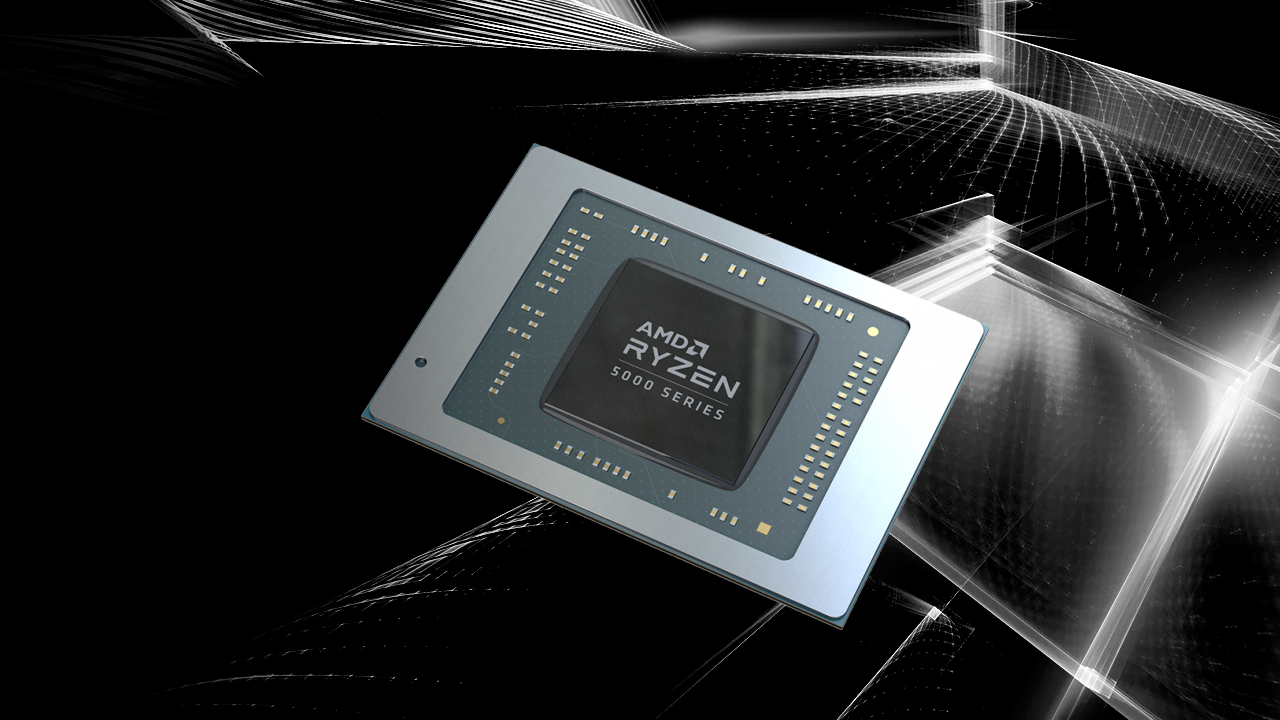The first alleged independent benchmark results of AMD’s recently introduced eight-core Ryzen 9 5980HS “Cezanne” laptop processors have been published. AMD’s Zen 3-based chip uses integrated Radeon graphics, and, according to the new numbers, beats its predecessor and Intel 10th Gen Comet Lake in single- and multi-core workloads, as well as 11th Gen intel Tiger Lake in single-core. However, there is a processor that still beats AMD’s Cezanne.
Hardware enthusiast @Tum_Apisak found two Geekbench 5 results from the Asus ROG Flow X13. The gaming notebook runs the eight-core Ryzen 9 5980HS at a 3.30 GHz default clock speed and can boost it all the way to a 4.53 GHz. In one case, AMD’s Cezanne APU hit a 1,532 single-core score and 8,219 multi-core score. In another case, the processor finished with 1,541 single-core points and 8,224 multi-core points.
| CPU | Single-Core | Multi-Core | Cores/Threads, uArch | Cache | Clocks | TDP | Link |
|---|---|---|---|---|---|---|---|
| AMD Ryzen 9 5980HS | 1540 | 8,225 | 8C/16T, Zen 3 | 16MB | 3.30 ~ 4.53 GHz | 35W | https://browser.geekbench.com/v5/cpu/6027200 |
| AMD Ryzen 9 4900H | 1230 | 7,125 | 8C/16T, Zen 2 | 8MB | 3.30 ~ 4.44 GHz | 35~54W | https://browser.geekbench.com/v5/cpu/6028856 |
| Intel Core i9-10885H | 1335 | 7,900 | 8C/16T, Skylake | 16MB | 2.40 ~ 5.08 GHz | 45W | https://browser.geekbench.com/v5/cpu/6006773 |
| Intel Core i7-1185G7 | 1550 | 5,600 | 4C/8T, Willow Cove | 12MB | 3.0 ~ 4.80 GHz | 28W | https://browser.geekbench.com/v5/cpu/5644005 |
| Apple M1 | 1710 | 7,660 | 4C Firestorm + 4C Icestorm | 12MB + 4MB | 3.20 GHz | 20~24W | https://browser.geekbench.com/v5/cpu/6038094 |
Typically, Cezanne looks very good compared to previous-generation AMD and Intel architectures. The most interesting comparison we can make with a Zen 3 APU is with an Intel Willow Cove processor. Since Intel hasn’t launched its eight-core Tiger Lake-H chips yet, quad-core Core i7 1100-series “Tiger Lake-U” processors are the only available CPUs featuring the Willow Cove microarchitecture. These CPUs are not quite meant for gaming machines and, therefore, come inside notebooks with less sophisticated cooling.
Generally, Intel Core i7-1185G7-based machines score 1,350-1450 single-core points on Geekbench 5. A well-cooled example can hit around 1,550 on a single core and about 5,600 on multi-cores.
Therefore, it looks like mobile CPUs featuring AMD’s Zen 3 and Intel’s Willow Cove cores have comparable single-core performance (assuming that both are cooled properly). Naturally, AMD’s eight-core gaming APU naturally beats Intel’s quad-core CPU in workloads leveraging multiple cores.
As far as Geekbench 5 results go, AMD’s Ryzen 9 5980HS looks like a very potent mobile APU with a 35W TDP. Yet, it’s not unbeatable.
Apple’s tiny M1 system-on-chip (SoC) running at 3.20 GHz scored 11% better than the Ryzen 9 5980HS in single-core workloads and 7% worse in multi-core workloads while consuming about 30% less power, assuming that its TDP is up to 24W.
AMD’s eight-core Ryzen 9 4900H “Renoir” APUs, based on the Zen 2 microarchitecture, scores about 1,230 single-core points and around 7,100 multi-core points when running at 3.30 / 4.44 GHz clocks in Geekbench 5. Therefore, the new Cezanne APU is apparently 25% faster than its Renoir predecessor in single-core tasks and about 15% faster in multi-core workloads.
Cezanne’s noticeably higher performance compared to its predecessor can be explained by microarchitectural improvements, as well as a two times larger L2 cache. The Ryzen 94900H is rated for up to a 54W TDP, whereas the new one has a default TDP of 35W.
A comparison of the new numbers for the Ryzen 9 5980HS to Intel’s eight-core Core i9-10885H, Intel’s fastest mobile Comet Lake CPU with a locked multiplier, suggests the Ryzen 9 5980HS is 15% faster in single-core workloads and 4% faster in multi-core tasks.
It should be noted that the Ryzen 9 5980HS numbers haven’t been confirmed, so you should take them with a grain of salt.
